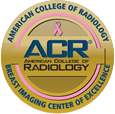Diagnostic Breast Imaging
The purpose of diagnostic mammography and diagnostic ultrasound is to address a specific problem related to the breasts that may or may not be related to breast cancer. Sometimes the radiologist will only need to use diagnostic mammography or diagnostic ultrasound alone to address the problem and to make a reliable diagnosis. Other times the radiologist will need to combine diagnostic mammography with diagnostic breast ultrasound to completely evaluate the problem. Rarely there are problems which are best addressed with breast MRI. Examples of the more common problems may include findings seen on a screening mammogram requiring recall for supplemental imaging, a breast lump, nipple retraction or other nipple changes, skin thickening or dimpling of the breast, skin redness, focal breast pain, or a spontaneous bloody or watery nipple discharge. An appointment is made so that the radiologist works with the technologist to direct and evaluate the diagnostic mammogram views or the ultrasound evaluation as they are acquired. The radiologist discusses the results and recommendation with the patient at end of the appointment. Most diagnostic mammogram and ultrasound evaluations are normal and turn out to be false alarms. In these cases, the patient is reassured and released to continue annual screening. However, if further evaluation is required such as a 6 month follow-up imaging examination or a needle biopsy, the radiologist and nurse will explain the procedure and make sure all questions are answered. The patient will then be scheduled to return for the follow-up procedure or for the biopsy procedure.

